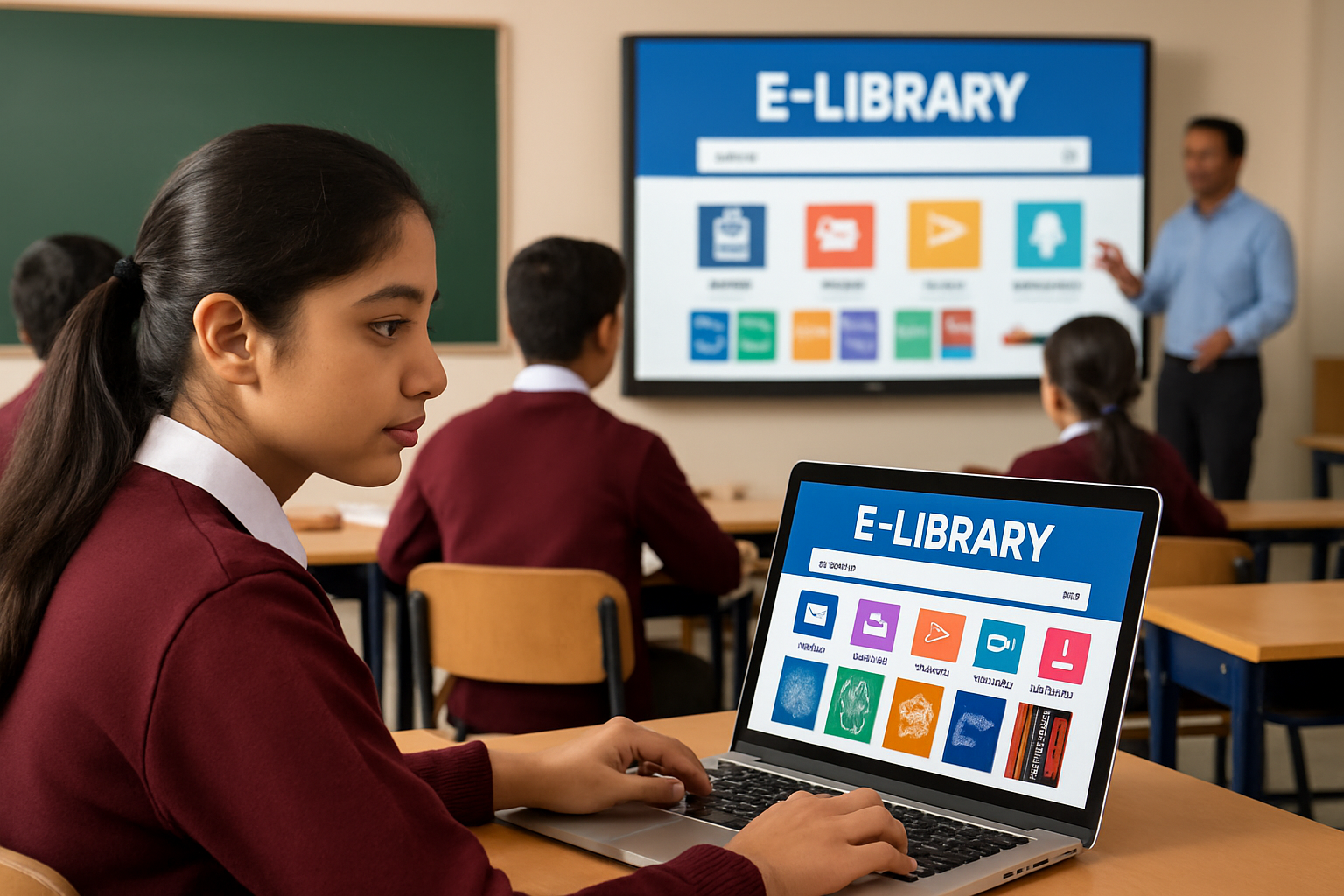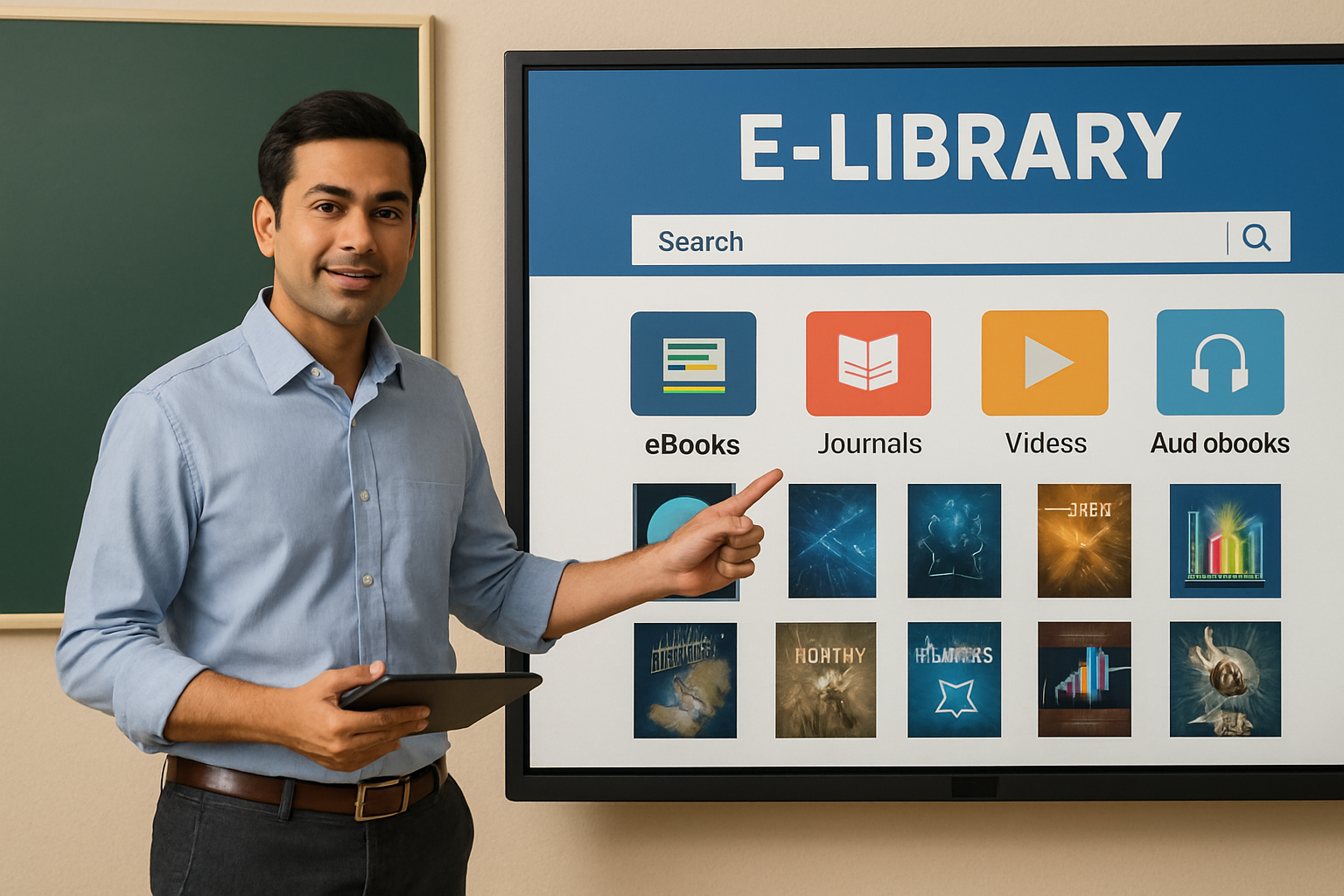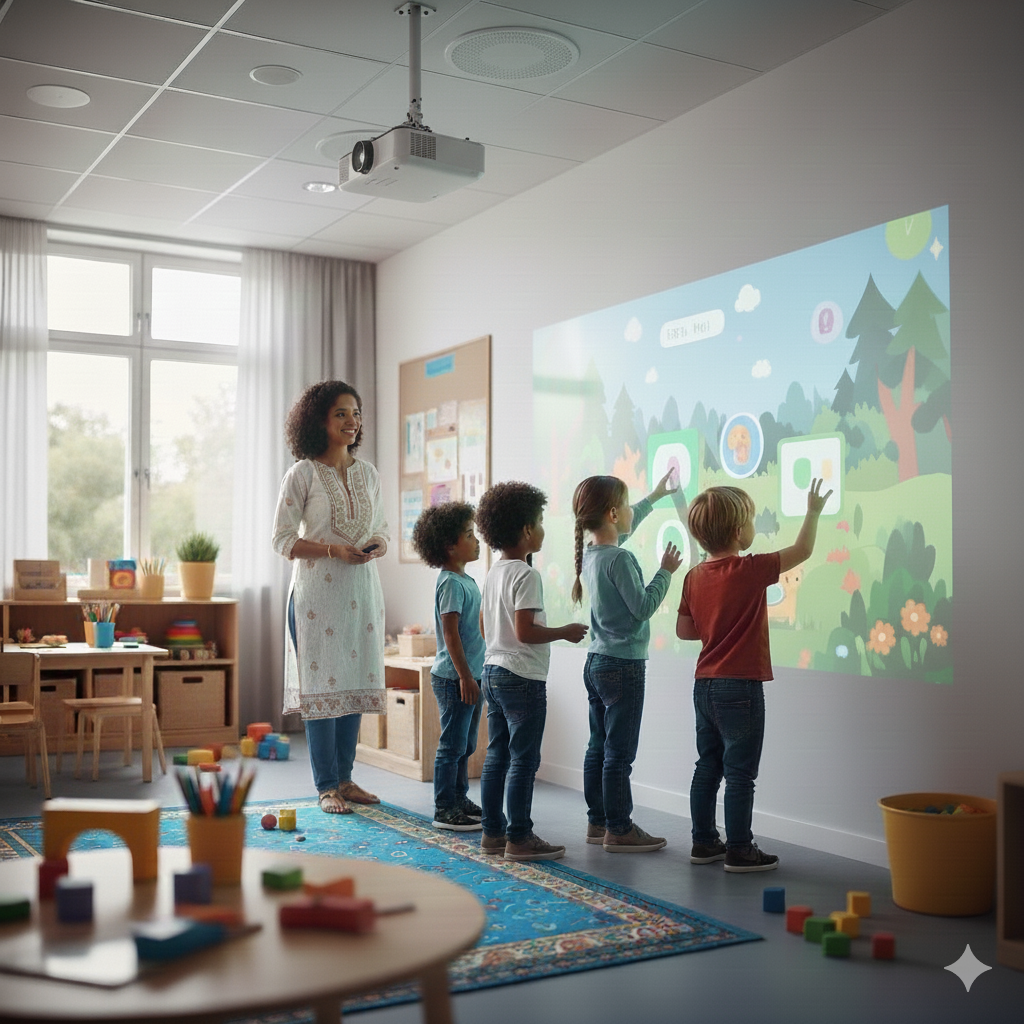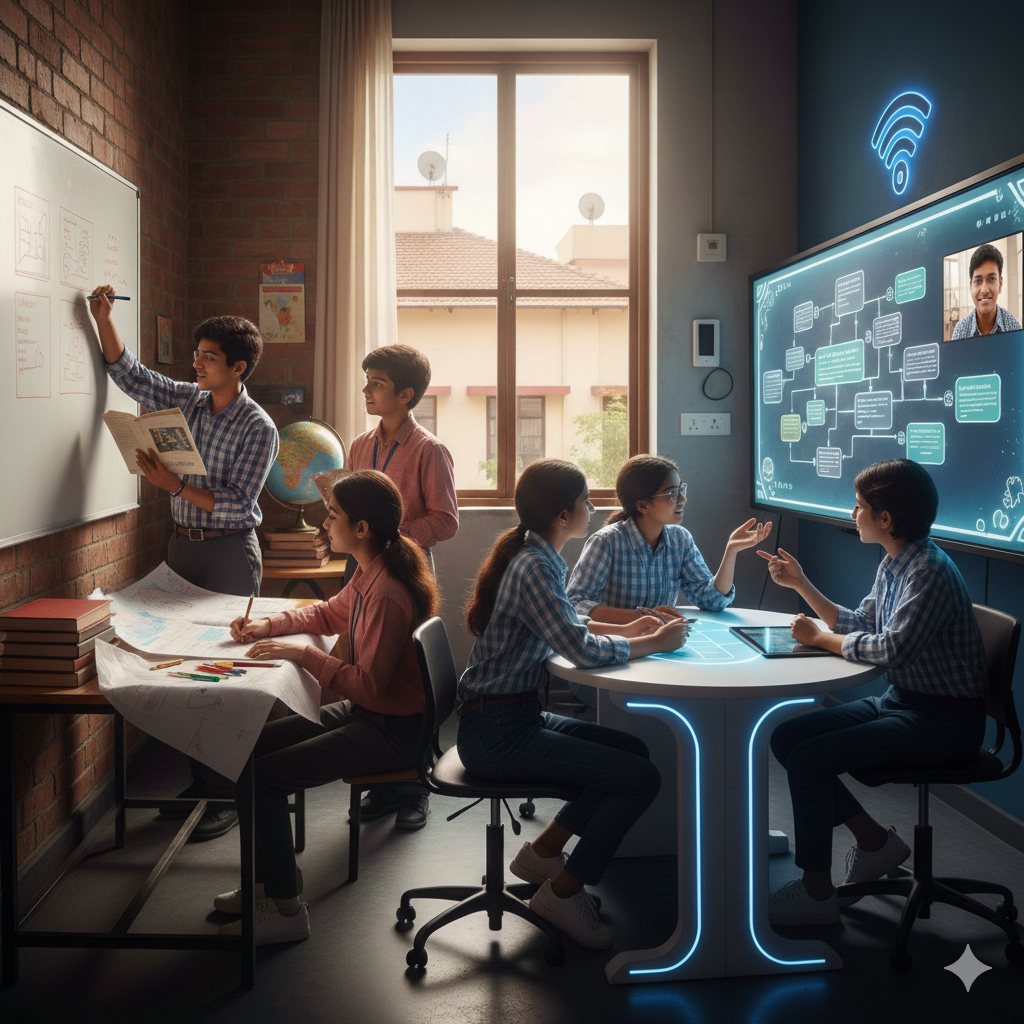A Beginner’s Guide to E-Libraries in a Digital Classroom

Walk into any modern school today, especially one trying to keep pace with change and you’ll likely hear the phrase “digital classroom” used frequently. Sometimes, it just means a projector and a PDF on-screen. But for institutions genuinely transforming how learning happens, it runs deeper.
One quiet but powerful piece of that puzzle is the e-library.
It’s not new. But when used right, it changes how students access information, how teachers plan lessons, and how learning happens outside the classroom. For those still figuring it out, this guide will walk you through the basics without the jargon.
What is an E-Library or Digital Library?

An e-library, or digital library, is essentially a library that exists online, without the need for physical space. No due dates. No dust-covered encyclopedias. Just content—books, articles, videos, research papers available digitally.
But here’s the important bit: it’s not just a Google search.
Good e-libraries are curated. That means someone, an educator, librarian, publisher, or developer has carefully picked what goes in. The goal is simple: give students and teachers access to credible, high-quality learning resources, all in one place.
Difference Between E-Libraries and General Online Content
Students today are already online. So why do we even need a separate e-library?
Because the internet, for all its usefulness, is also a mess. It’s cluttered. It’s unfiltered. It’s easy to find content, but hard to know if it's right or even accurate.
E-libraries cut out the noise. They’re built for education, not clicks.
In short, if you're building a smart class, an e-library gives structure to your digital setup. It’s not just content, it’s content that fits.
How Does an E-Library Work?
Different platforms work in different ways. But the core idea is the same: students (and teachers) log in to a portal often using their school ID and get access to digital resources.
Some schools have their own library systems. Others use third-party tools. Some plug it into their LMS. It depends.
The best setups allow access from any device. That means a student can start a chapter in school on a tablet and finish it later on their phone or home computer.
Key Features of a Modern E-Library in Education
- Search that actually works: It’s not like searching on YouTube. You can filter by subject, grade, format, even language. Saves time, and teachers love that.
- More than just text: Videos, audiobooks, lecture notes, interactive models if it helps explain the concept, it’s in there.
- Cloud access: Everything’s stored online, not on individual devices. So even if your tablet breaks, your content doesn’t disappear.
- Connects with classroom tools: A teacher using a digital board can open a resource from the e-library right there on the screen. No downloads, no delays.
- Smart suggestions: Some systems even recommend material based on what students read earlier. Think of it as Netflix, but for learning.
Types of E-Libraries Used in Schools and Colleges
Not all schools need the same thing. And not all budgets allow for premium subscriptions. Here’s what’s common:
- Institutional E-Libraries: Some schools build their own. They upload notes, recorded lectures, presentations. Works well for internal use.
- Paid Subscriptions: Platforms like Britannica or World Book offer rich libraries with professional content but they come at a cost.
- Free Public Libraries: The National Digital Library of India (NDLI) is a solid option. It’s free. It’s multilingual. And it covers everything from school-level textbooks to engineering research.
- Integrated Classroom Systems: Some setups come with built-in e-library access especially in premium digital classroom hardware. One login gives access to teaching, testing, and learning material.
Advantages of E-Libraries in a Digital Classroom
- Learning doesn’t end at 3 PM: Students can log in anytime. Early in the morning. On the bus. During revision before exams. Access is always open.
- Saves money: No need to buy multiple copies of the same book or replace worn-out ones every year. And no printing handouts.
- Supports all kinds of learners: Some students need to read. Others understand better when they listen. E-libraries allow both. Plus, features such as text-to-speech support students with learning challenges.
- Works with existing classroom tech: Already using digital boards or tablets? E-libraries plug right in, giving teachers live access to content during class.
- Cuts down on paper waste: Less printing. Fewer physical books. Better for the environment and for storage space.
E-Libraries vs Traditional Libraries: A Quick Comparison
Physical libraries still matter. But if your focus is on building a modern digital classroom, digital resources offer more reach, more flexibility, and fewer roadblocks.
How to Integrate an E-Library into Your Digital Classroom Setup
This isn’t as tech-heavy as it sounds. You can get started without a huge investment. Here's a practical approach:
- Check your tech first: Is your Wi-Fi reliable? Do your students have access to devices? Do teachers feel comfortable with basic tech tools?
- Pick a platform that fits: If you’re just starting out, public platforms like NDLI are a great entry point. If you’ve already invested in digital tools, look for e-libraries that integrate well with them.
- Connect it to your LMS or smart board: This makes access easier for both teachers and students. No need to open 10 different tabs.
- Train your team: A 30-minute demo can go a long way. Most resistance to tech comes from unfamiliarity, not from dislike.
- Start small, grow fast: Pick a few classes. Get feedback. Expand gradually. You don’t have to digitize everything in one go.
Future of E-Libraries in Indian Education
With the National Education Policy (NEP 2020) pushing for more tech integration, and students increasingly learning outside the classroom, e-libraries are becoming essential.
- Aligned with policy: NEP calls for digital access and multilingual support, e-libraries already offer both.
- Perfect for hybrid learning: Whether students are in school or learning remotely, content is just a click away.
- Next-gen integration: In future-ready classrooms, e-libraries will sync with AI platforms, adaptive assessments, and smart analytics to track learning in real time.
Final Thoughts
An e-library won’t fix a broken education system. But in a school or college that’s already working to improve access, teaching, and outcomes, it’s one of the simplest upgrades you can make.
If you’ve invested in a smart class setup, adding a well-curated digital library brings that investment to life. It lets students explore. It helps teachers personalize. And it makes learning feel less like a task and more like an opportunity.
Frequently Asked Questions (FAQs)
Q1. What is the difference between a digital library and an e-library?
Digital libraries are collections of digitized content accessed online, while e-libraries are a broader term that also include electronic formats like audio/video and may need special equipment.
Q2. In what ways is an e-library integrated into a digital classroom?
In a digital classroom, students and teachers access the e-library via connected devices like tablets, laptops, or interactive boards. Students can access, highlight, take notes, and save study materials anytime, making it easier to support both blended and self-paced learning styles.
Q3. What equipment is needed to set up an e-library in a smart class?
Basic educational equipment includes internet-enabled devices, storage servers (cloud or local), access control systems, and compatible software or LMS integration. It may also require integration with smart class hardware like interactive panels or digital boards.
Q4. Are e-libraries suitable for rural or low-resource schools?
Yes, especially when paired with low-cost digital tools and government-supported platforms like NDLI (National Digital Library of India). Offline access, preloaded content, and hybrid setups make them feasible for rural environments.
Q5. Can teachers upload their own materials to an e-library system?
Many modern e-library platforms allow teacher uploads, content tagging, and sharing within their school’s ecosystem. This helps localize learning and enhances collaboration in the digital classroom.
Discover how tools like e-libraries fit into a complete digital classroom. See how Roombr’s all-in-one solution brings it all together seamlessly.
Foziya Abuwala
Share
Step Into the future of
Education with Roombr

















